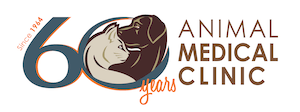Man’s Best Friend – Dog Care that makes sense.
Feeding
- Puppies 8 to 12 weeks old need four meals a day.
- Feed puppies three to six months old three meals a day.
- Feed puppies six months to one year two meals a day.
- When your dog reaches his first birthday, one meal a day is usually enough.
- For some dogs, including larger canines or those prone to bloat, it’s better to feed two smaller meals.
Premium-quality dry food provides a well-balanced diet for adult dogs and may be mixed with water, broth or canned food. Your dog may enjoy cottage cheese, cooked egg, fruits and vegetables, but these additions should not total more than ten percent of his daily food intake.
Puppies should be fed a high-quality, brand-name puppy food. Please limit “people food,” however, because it can result in vitamin and mineral imbalances, bone and teeth problems and may cause very picky eating habits and obesity. Clean, fresh water should be available at all times, and be sure to wash food and water dishes frequently.
Exercise
Dogs need exercise to burn calories, stimulate their minds, and keep healthy. Exercise also tends to help dogs avoid boredom, which can lead to destructive behaviors. Supervised fun and games will satisfy many of your pet’s instinctual urges to dig, herd, chew, retrieve and chase.
Individual exercise needs vary based on breed or breed mix, sex, age and level of health—but a couple of walks around the block every day and ten minutes in the backyard probably won’t cut it. If your dog is a 6- to 18-month adolescent, or if she is an active breed or mixed-breed from the sporting, herding, hound or terrier groups, her requirements will be relatively high.
Grooming
You can help keep your dog clean and reduce shedding with frequent brushing. Check for fleas and ticks daily during warm weather. Most dogs don’t need to be bathed more than a few times a year. Before bathing, comb or cut out all mats from the coat. Carefully rinse all soap out of the coat, or the dirt will stick to soap residue. Click here for more grooming tips.
Handling
Small dogs, sometimes referred to as “lap dogs,” are the easiest to handle. To carry a puppy or small dog, place one hand under the dog’s chest, with either your forearm or other hand supporting the hind legs and rump. Never attempt to lift or grab your puppy or small dog by the forelegs, tail or back of the neck. If you do have to lift a large dog, lift from the underside, supporting his chest with one arm and his rear end with the other.
Housing
Your pet needs a warm, quiet place to rest, away from all drafts and off the floor. A training crate is ideal. You may wish to buy a dog bed, or make one out of a wooden box. Place a clean blanket or pillow inside the bed. Wash the dog’s bedding often. If your dog will be spending a lot of time outdoors, be sure she has access to shade and plenty of cool water in hot weather, and a warm, dry, covered shelter when it’s cold.
Licensing and Identification
Follow your community’s licensing regulations. Be sure to attach the license to your dog’s collar. This, along with an ID tag and implanted microchip or tattoo, can help secure your dog’s return should he become lost. Brevard County makes it easy to renew/obtain your pet license. Please tap this link to get started. TAP HERE.
Behavior Information
Training
A well-behaved companion canine is a joy. But left untrained, your dog can cause nothing but trouble. Teaching your dog the basics—”Sit,” “Stay,” “Come,” “Down,” “Heel,” “Off” and “Leave it”—will improve your relationship with both your dog and your neighbors. If you have a puppy, start teaching him his manners as soon as possible! Use little bits of food as a lure and reward. Puppies can be enrolled in obedience courses when they have been adequately vaccinated. Contact your local humane society or SPCA for training class recommendations.
You should always keep your puppy or dog on a leash in public. Just be sure your pet will come to you at all times whenever you say the word. A dog who is disobedient or aggressive is not ready to play with others.
Health
Your dog should see the veterinarian for a full check-up, shots and a heartworm blood test every year, and immediately if he is sick or injured.
Dental Health
While many of us may object to our pet’s bad breath, we should pay attention to what it may be telling us. Bad breath is most commonly an indication that your dog is in need of a dental check up. Dental plaque caused by bacteria results in a foul smell that requires professional treatment. After a professional cleaning, the teeth and gums may be maintained in a healthy state by brushing the teeth regularly, feeding a specially formulated dental diet and treats, and avoiding table scraps. Your veterinarian can give you more tips on minimizing dental disease and bad breath.
You can clean your canine’s teeth with a dog toothpaste or a baking-soda-and-water paste once or twice a week. Use a child’s soft toothbrush, a gauze pad or a piece of nylon pantyhose stretched over your finger.
Some dogs are prone to periodontal disease, a pocket of infection between the tooth and the gum. This painful condition can result in tooth loss and spread infection to the rest of the body. Veterinarians can clean the teeth as a regular part of your dog’s health program.
Bad Breath
While bad breath caused by dental disease may not be too serious if caught early enough, some odors may be indicative of fairly serious, chronic problems. Liver or intestinal diseases may cause foul breath, whereas a sweet, fruity smell may be indicative of diabetes. If your dog’s breath smells like ammonia or urine, kidney disease is a possibility. Any time you notice your pet has bad breath accompanied by other signs of ill health, such as loss of appetite, vomiting, weight loss, depression, excessive drinking or urinating, schedule a visit to the veterinarian.
Fleas and Ticks
Daily inspections of your dog for fleas and ticks during the warm seasons are important. Use a flea comb to find and remove fleas. There are several new methods of flea and tick control. Speak to your veterinarian about these and other options.
Heartworm
This parasite lives in the heart and is passed from dog to dog by mosquitoes, so it is a year-round concern in this area. Florida has a very high rate of heartworm infections and without treatment, heartworm infections will lead to the death of your pet. Fortunately, heartworms can be prevented by giving your dog a once-a-month pill. We recommend Sentinel or Simparica Trio because these products also prevent intestinal parasites and fleas at the same time. Your do should have a blood test for heartworm every year to make sure the preventative medication is working. If he should happen to get heartworms, we want to catch it early, while it is still treatable.
For those of our patients who aren’t in Florida full time — if you travel south with your pet during the winter, your dog should be on the preventive medicine during the trip.
Medicines and Poisons
Never give your dog medication that has not been prescribed by a veterinarian. For example, did you know that one regular-strength ibuprofen tablet can cause stomach ulcers in a ten-pound dog? Keep rat poison and other rodenticides away from your pet. If you suspect that your animal has ingested a poisonous substance, call your veterinarian or the ASPCA Animal Poison Control Center for 24-hour animal poison information at (888) 426-4435.
Spaying and Neutering
What is the right time to spay or neuter my pet?
Small breeds (Below 35lbs estimated adult weight)
- Female – spay at 7 months
- Male – casteration at 9 months
Large and medium breeds (35+lbs) – doctors will discuss the timing of the surgery.
There are some benefits to waiting until a year of age in larger breed dogs:
- Conformational differences ( in dogs refers solely to the externally visible details of a dog’s structure and appearance, as defined in detail by each dog breed‘s written breed standard.)
- Less joint problems
- Golden Retriever FEMALE only – reduced incidence of cancer (except breast)
What are the Risks of waiting until a year?
- Increased risk of breast cancer (3%-8%)
- Unwanted pregnancy
- Male Behavior Problems
For more on this important surgery, read our top ten reasons to spay or neuter your pet.
Vaccinations
– Puppies should be vaccinated with a combination vaccine (called a “5-in-1”) at two, three, and four months of age, and then once annually. This vaccine protects the puppy from distemper, hepatitis, leptospirosis, parvovirus, and parainfluenza. A puppy’s vaccination program cannot be finished before four months of age.
– If you have an unvaccinated dog older than four or five months, he will need a series of two vaccinations given two to three weeks apart, followed by a yearly vaccination.
– Puppy vaccination and socialization should go together. Many veterinarians recommend that new owners take their puppies to socialization classes, beginning at 8 to 9 weeks of age. At this age, they should have received at least their first series of vaccines. Learn more about the importance of puppy socialization.
Since laws vary around the country, contact a local veterinarian for information on rabies vaccination. In New York City, for example, the law requires all pets older than three months of age to be vaccinated for rabies. The first rabies vaccine must be followed by a vaccination a year later, and then every three years.
There are a variety of vaccines that may or may not be appropriate for your pet. Your veterinarian can tell you about them.
Please note, if your pet gets sick because he is not properly vaccinated, the vaccination should be given after your companion animal recovers.
Worms
Dogs are commonly exposed to worms and possible infestation—even in urban areas. Microscopic eggs produced by intestinal worms are passed in an infected dog’s feces. Most puppies, even from healthy mothers in good homes, carry roundworms or hookworms.
The key to treatment is correct diagnosis. This will ensure that the medication is effective against the parasite your pet has. A dewormer that eliminates roundworms, for example, will not kill tapeworms. Your veterinarian can best determine the culprit—and prescribe the appropriate medication.
Fun Facts
- The nose knows! Your dog can detect odors about a billion times better than you can.
- The average lifespan of a dog varies from 8 to 16 years, depending on breed type, size, genetics and care.
Dog Supply Checklist
- Premium-quality dog food and treats
- Food dish
- Water bowl
- Toys, toys and more toys, including safe chew toys
- Brush & comb for grooming, including flea comb
- Collar with license and ID tag
- Leash
- Carrier (for smaller dogs)
- Training crate
- Dog bed or box with warm blanket or towel
- Dog toothbrush
The No-No List
Do not feed your dog the following:
- Alcoholic beverages
- Chocolate
- Coffee
- Grapes & raisins
- Moldy or spoiled food
- Onions, garlic & chives
- Poultry bones
- Salt & salty foods
- Tomato leaves, stems & unripe fruit
- Yeast dough
The Scoop on Poop
Keep your dog on a leash when you are outside, unless you are in a secured, fenced-in area. If your dog defecates on a neighbor’s lawn, the sidewalk or any other public place, please clean it up.



